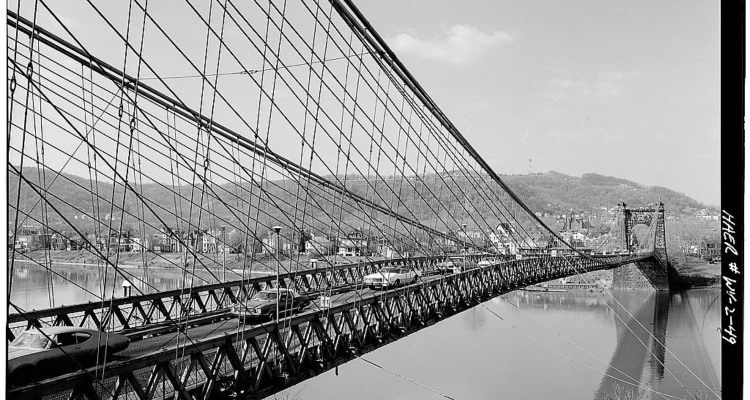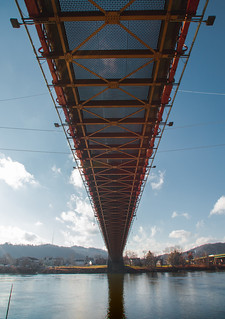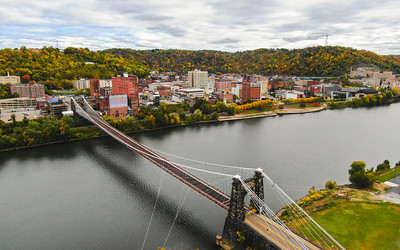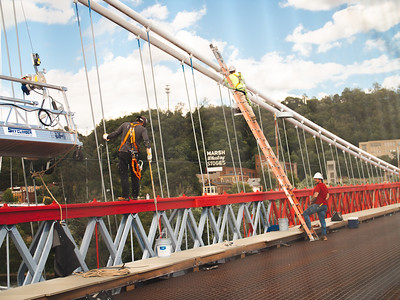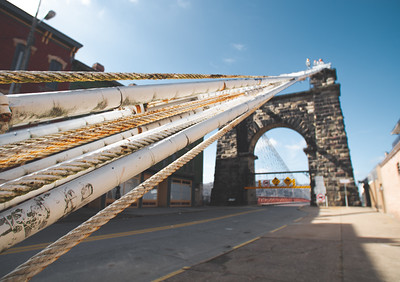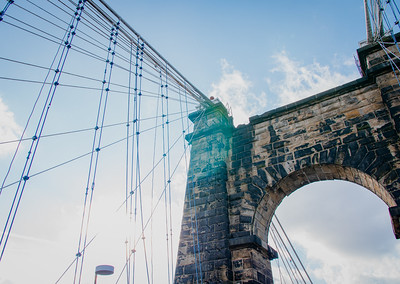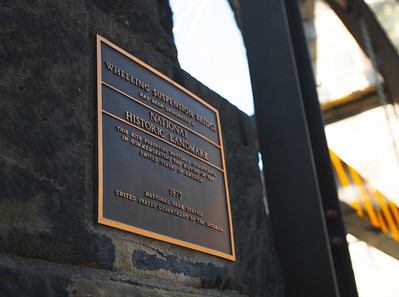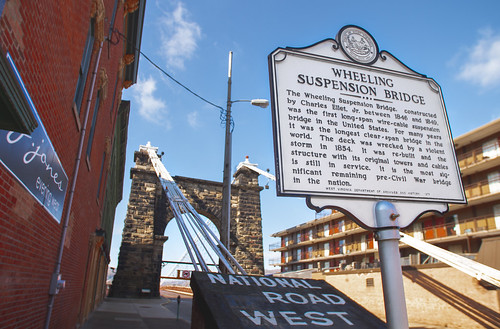One of the most iconic structures in the Wheeling skyline is celebrating 50 years as a National Historic Landmark: the Wheeling Suspension Bridge! This bridge, older than the state of West Virginia itself, has both changed and witnessed the evolution of Wheeling as a city.
Transportation Titan
Charles Ellet, Jr., one of the most prominent American civil engineers of the 19th century, designed the Wheeling Suspension Bridge. Local residents, rather than state or federal entities, provided financial resources, and the Wheeling and Belmont Bridge Company constructed, operated, and maintained the bridge. Completed in 1849, the Wheeling Suspension Bridge was the longest bridge in the world for two years.
The construction of the Suspension Bridge connected the National Road (US Route 40) across the Ohio River to Wheeling Island. It became a key component of Wheeling’s transportation and trade networks, both regionally and nationally. Locally, the Suspension Bridge provided easy access to Wheeling Island and facilitated the quicker transportation of goods across the river. Over its 175-year history, the bridge has persevered through two Supreme Court cases, a shift from wagons to automobiles, devastating weather damage, and the creation of West Virginia as a state.
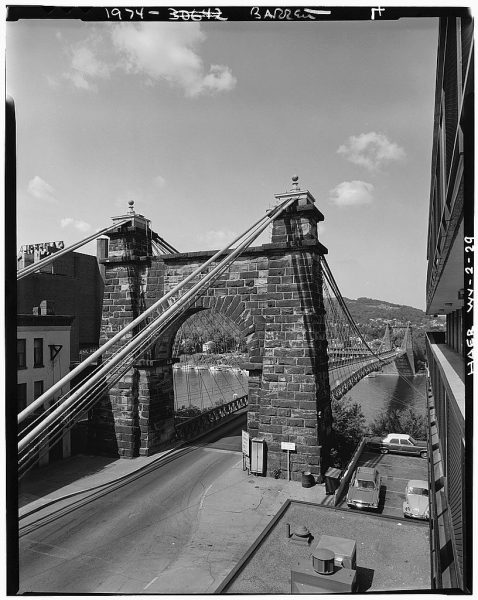
A Bridge of National Significance
The Wheeling Suspension Bridge was added to the National Register of Historic Places on January 26, 1970. On that same day, the bridge and Independence Hall became the first two listings from Ohio County on the National Register. Five years later, on May 15, 1975, the US Secretary of the Interior declared the Suspension Bridge a National Historic Landmark.
What’s the difference between the National Register of Historic Places and a National Historic Landmark? Listings on the National Register include sites of historic or cultural significance deemed worthy of preservation. As of October 2024, Wheeling has 50 listings on the National Register, encompassing historic districts, individual buildings, and other structures (like bridges). These sites may hold local, state, and/or national significance.
National Historic Landmarks, on the other hand, are recognized for their national significance and must pass an additional consideration process. All National Historic Landmarks are also included on the National Register. The Wheeling Suspension Bridge is one of only two designated National Historic Landmarks in Wheeling (the other being Independence Hall).
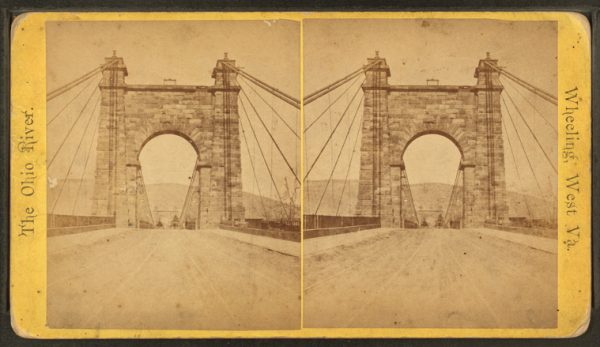
Date Created: 1850 – 1930 (Approximate)
The Bridge Today
A little over a century after its construction, the Suspension Bridge’s role in Wheeling changed. In the 1950s, the construction of I-70 and the Interstate Highway System diverted most through traffic away from the bridge, transitioning it into a local route noted for its historical significance. In 2019, however, the bridge was closed to vehicular traffic to undergo a major rehabilitation project. There is currently no official timeline for when the improvements will be complete, and various news sources indicate there’s no guarantee that the bridge will ever reopen to vehicles.
While its era of vehicle traffic may be over, the bridge remains a crucial symbol of Wheeling’s history and identity. Residents use the bridge for walks with their dogs, runs, and meet-ups with friends from across the river. Additionally, it has become a popular site for senior photos, engagement shoots, and selfies.
As one of the longest-lasting historical symbols of the city, the Suspension Bridge will be the focal point of the new Wheeling Gateway Center, currently under construction next door to where the former Knights Inn/Wheeling Inn Motel stood. Its designation as a National Historic Landmark signifies to both the city and the entire country that Wheeling is a site of national significance.
References
“Wheeling Suspension Bridge,” National Register of Historic Places Nomination Form (U.S. Department of the Interior, National Park Service, 1970), https://catalog.archives.gov/id/86535935; Emory L. Kemp, “Wheeling Suspension Bridge,” e-WV: The West Virginia Encyclopedia, https://www.wvencyclopedia.org/articles/1228.
“Wheeling Suspension Bridge,” National Register of Historic Places Nomination Form (U.S. Department of the Interior, National Park Service, 1970), https://catalog.archives.gov/id/86535935.
National Register of Historic Places Database, National Park Service, https://www.nps.gov/subjects/nationalregister/database–research.htm#table; “National Historic Landmarks: Frequently Asked Questions,” National Park Service, December 27, 2023, https://www.nps.gov/subjects/nationalhistoriclandmarks/faqs.htm.
“National Historic Landmarks: Frequently Asked Questions,” National Park Service, December 27, 2023, https://www.nps.gov/subjects/nationalhistoriclandmarks/faqs.htm.
Baylee Martin, “What is the future of the Wheeling Suspension Bridge?,” WTRF, February 6, 2024, https://www.wtrf.com/ohio–county/what–is–the–future–of–the–wheeling–suspension–bridge-2/.


